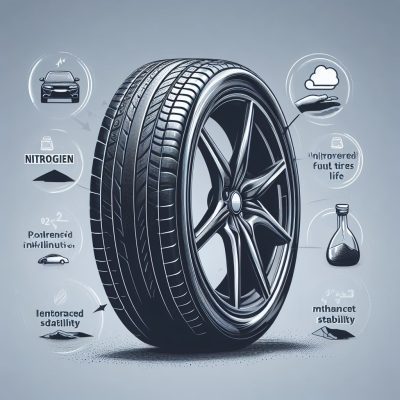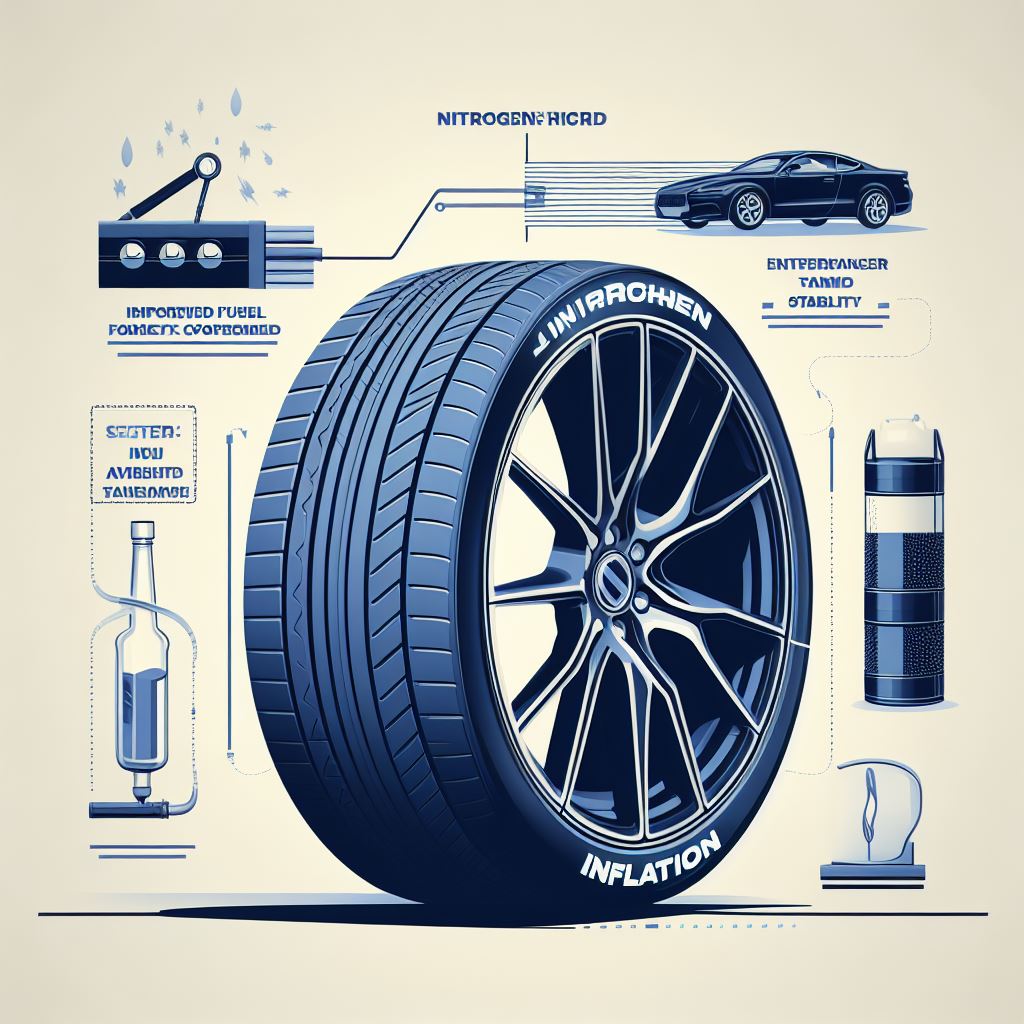Your car’s tires are its foundation, affecting everything from ride comfort to fuel efficiency. In the pursuit of better performance and safety, many drivers are turning to nitrogen tyre inflation as an alternative to regular air. But what exactly does nitrogen bring to the table, and how does it impact your car’s tires? In this article, we’ll dive into the science and practical benefits of using nitrogen for tyre inflation, providing you with insights into why this choice could be a game-changer for your vehicle and your driving experience.
Key Takeaways
- Nitrogen tyre inflation reduces running temperature and increases tyre life.
- Nitrogen provides a more stable temperature compared to normal air and prevents rusting.
- Nitrogen tyre inflation allows tyres to operate efficiently in high temperatures.
- Despite drawbacks such as higher cost and limited availability, nitrogen tyre inflation is a viable option for many car owners.
Benefits of Nitrogen Tyre Inflation
You should consider the benefits of nitrogen tyre inflation as it reduces running temperature and increases tyre life.
When you fill your tyres with nitrogen, it helps to maintain a stable temperature, ensuring that your tyres can operate efficiently even in high temperatures. Unlike normal air, nitrogen also prevents rusting, which can extend the lifespan of your tyres.
However, it’s important to note that there are some disadvantages to using nitrogen in tyres, such as the higher cost, maintenance requirements, and limited availability. Additionally, there may be safety concerns associated with nitrogen filling.

Drawbacks of Nitrogen Tyre Inflation
Using nitrogen for tyre inflation can have drawbacks. One drawback is the higher cost compared to using normal air. Another drawback is the maintenance requirements. Nitrogen filling requires regular maintenance to ensure the optimal nitrogen levels are maintained. This involves checking the nitrogen pressure and topping up when necessary. Additionally, there is a limited availability of nitrogen filling stations, which may make it inconvenient for some individuals. Furthermore, if normal air is mixed with nitrogen in the tyres, it can reduce the effectiveness of using nitrogen. Despite these drawbacks, many still argue for the benefits of using nitrogen in tyres. Some of these benefits include improved tyre life, better temperature stability, and reduced risk of rusting.
Nitrogen Vs. Normal Air: a Comparison
Comparing nitrogen and normal air, nitrogen offers benefits such as improved tyre life and temperature stability, while normal air may lead to rusting and reduced effectiveness.
When it comes to tyre life, nitrogen can actually increase it due to its ability to maintain proper pressure for longer periods of time. Additionally, nitrogen-filled tyres tend to have a more stable temperature, which can be especially beneficial in high-temperature environments.
On the other hand, normal air contains moisture, which can lead to rusting of the inner components of the tyre. It can also cause the tyre to lose pressure more quickly, resulting in reduced effectiveness.
Therefore, considering the advantages of improved tyre life and temperature stability, nitrogen seems to be the better choice for filling your tyres.
The Cost of Nitrogen Tyre Inflation
The cost of nitrogen tyre inflation can vary depending on the location and condition of your tyres, but it’s worth considering for its potential benefits. Nitrogen tyre inflation offers advantages such as reducing the running temperature of your tyres, increasing their lifespan, and providing a more stable temperature compared to normal air. It also allows your tyres to operate efficiently in high temperatures and prevents rusting.
However, there are some disadvantages to consider, including the expense, maintenance, availability, and the potential for mixing nitrogen with normal air. Despite these drawbacks, the benefits of nitrogen tyre inflation, such as improved safety and tyre wear, make it a viable option for many car owners.
Other Considerations for Nitrogen Tyre Inflation
Have you thought about the impact of nitrogen tyre inflation on your car’s mileage and ride quality?
Nitrogen tyre inflation has been a topic of discussion among car enthusiasts and experts alike. While there are some advantages to filling your tyres with nitrogen, such as reduced running temperature and increased tyre life, there are also disadvantages to consider.
Nitrogen filling can be expensive and may require maintenance. Availability of nitrogen filling stations can also be a concern. Additionally, mixing nitrogen with normal air and safety concerns are factors to keep in mind.
When comparing nitrogen to normal air, factors like cost of inflation, availability, loss of tyre pressure, tyre temperature, maintenance, tyre wear, and safety should be considered.
Process of Filling Nitrogen in Tubeless Tyres
Did you know that the process of filling nitrogen in tubeless tyres involves purging the existing air and then using a nitrogen generator to fill the tyres with pure nitrogen gas? This process is commonly used to improve tyre performance and increase safety on the road.
By removing the existing air, any impurities or moisture are eliminated, resulting in a more stable tyre pressure and temperature. The nitrogen generator then fills the tyres with pure nitrogen gas, which reduces the running temperature and increases tyre life. Nitrogen also helps to prevent rusting and can operate in high temperatures.
Although there are some disadvantages, such as the cost and availability of nitrogen filling stations, many drivers believe that the benefits outweigh the drawbacks.
Impact on Car’s Mileage and Ride Quality
If you use nitrogen in your car’s tyres, you can expect an improvement in mileage and ride quality over time. Nitrogen-filled tyres have a lower rate of pressure loss compared to tyres filled with regular air.
This means that your tyres will maintain the correct pressure for longer periods, leading to better fuel efficiency and increased mileage. Additionally, nitrogen-filled tyres are less prone to overheating, which can result in a smoother and more comfortable ride.
The stable temperature of nitrogen also helps to prevent the tyres from expanding or contracting, reducing the risk of blowouts and improving overall safety. While there may be initial costs and concerns about availability, the long-term benefits of using nitrogen in your car’s tyres can greatly outweigh these drawbacks.
Conclusion
So there you have it, the pros and cons of filling nitrogen gas in your car tyres.
Like everything in life, there are advantages and disadvantages to consider. Nitrogen tyre inflation can bring benefits such as increased tyre life and stability, but it also comes with drawbacks like expense and availability.
Just like the road ahead, the choice is yours to make. Drive safe and make a decision that suits your needs and circumstances.
